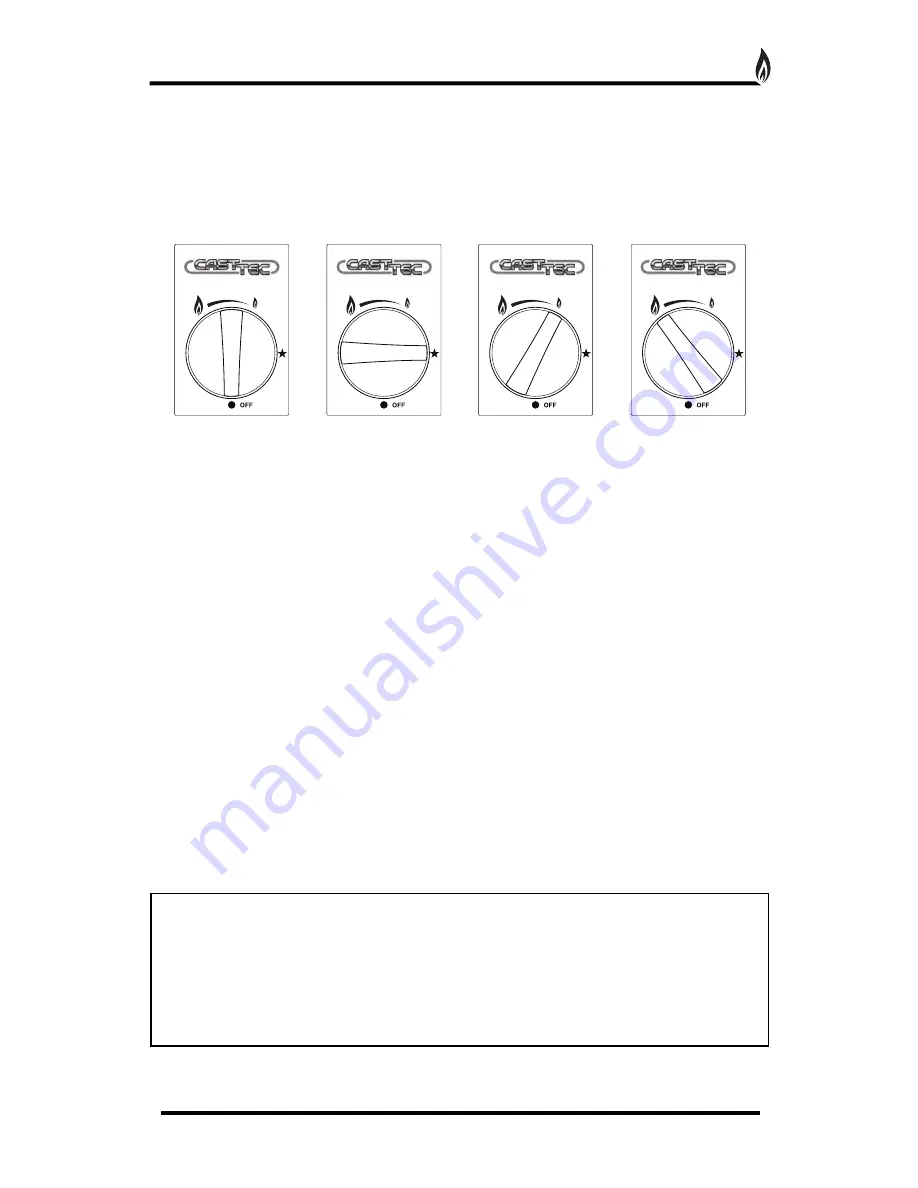
USER INSTRUCTIONS
15
Please also familiarise yourself with the
Notes for the Installer and End User
on page 3.
Never place combustible material directly in front of this appliance. Floor covering such as carpet is acceptable
but must be a minimum of 300mm from the incandescent flame. Any combustible shelf must be at least 215mm
above the fire trim, providing the shelf depth is 150mm or less.
OPERATION AND CONTROLS
It is most important that the operator of this gas appliance has fully read and understood all the operating,
cleaning and maintenance procedures as laid out in these instructions.
Lighting Procedure
1. To light the fire, remove the ash pan cover.
2. Control knob to be in POSITION 1 at commencement of the ignition sequence.
3. Fully depress control knob and turn anticlockwise to POSITION 2 where it reaches a natural restriction (allow
a couple of seconds for the pilot gas to purge through the pipe). A sparking click is heard/felt and the pilot flame
is then lit (the fire can safely be left on permanent pilot at this stage for future lighting if preferred or can be
ignited every time the fire is lit). The pilot assembly is located at the front lefthand side of the fire, and when
ignited (this can take two or three ‘clicks’) it can be seen through the front coal set. Keep the knob depressed for
10/15 seconds to allow the thermocouple to establish the pilot flame. The knob can then be released.
4. The operating level of the burner is now set by turning the control knob from the pilot POSITION 2 through the
minimum setting POSITION 3 to the maximum POSITION 4. The control knob is adjustable between these two
positions.
5. To turn off the appliance, depress the control knob and turn clockwise until the POSITION 2 is reached. The
main burner will go out but the pilot light will still be lit. The pilot can then be extinguished by depressing the
control knob and then turning to the off POSITION 1.
In the event of failure of the normal means of ignition, Fully depress control knob and turn anticlockwise to
POSITION 2 and light the pilot with a naked flame from beneath the burner tray.
The fire is a very efficient heating appliance and therefore care must be taken not to touch working surfaces
including the glass when operating. This particularly applies around the perifery of the glass and louvre outlet.
Other areas considered to be working surfaces are everything except the control handles and fret knob.
WARNINGS:
Any alteration to this appliance including its ceramic components may render it inoperable and
unsafe.
ALWAYS run this appliance on the high setting for the first 30 minutes (minimum) - Failure to do this
may result in poor combustion and excessive sooting.
Never use this appliance if the glass panel is broken, removed or is open.
Fig. 15
POSITION 1
OFF
POSITION 2
IGNITION/PILOT
POSITION 3
MINIMUM SETTING
POSITION 4
MAXIMUM SETTING


































